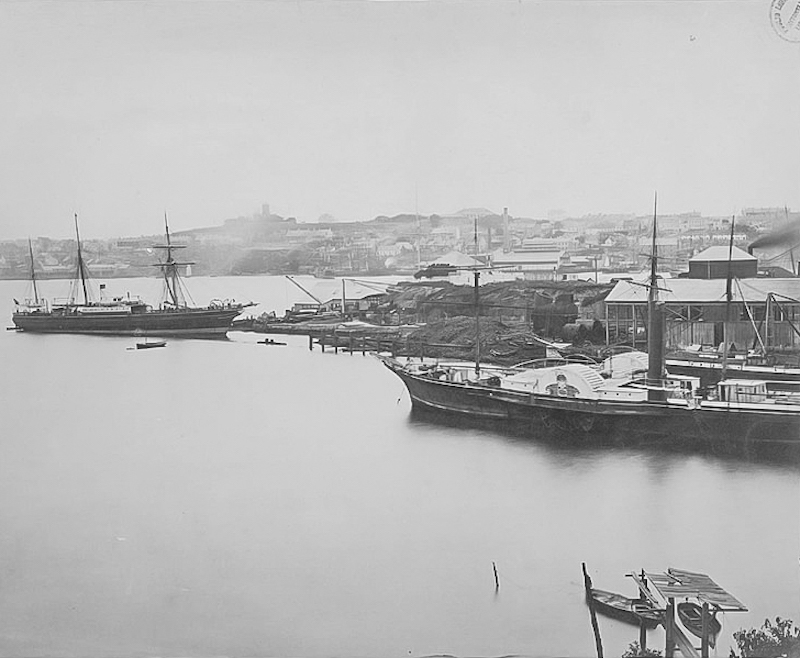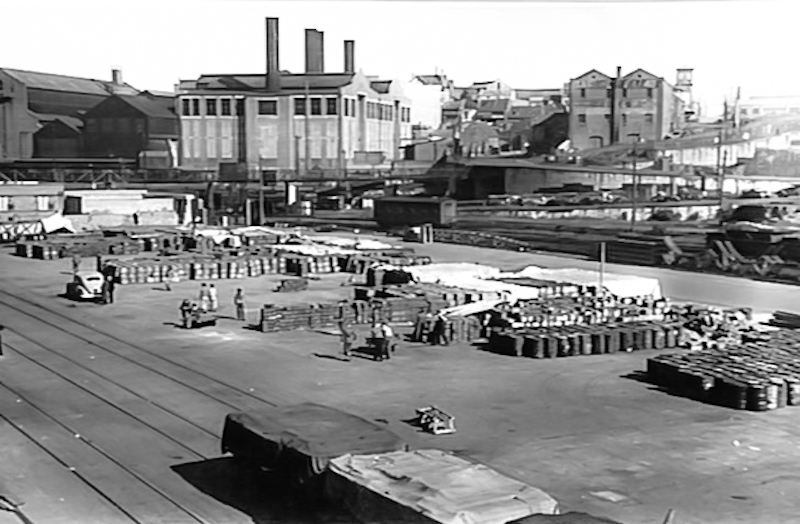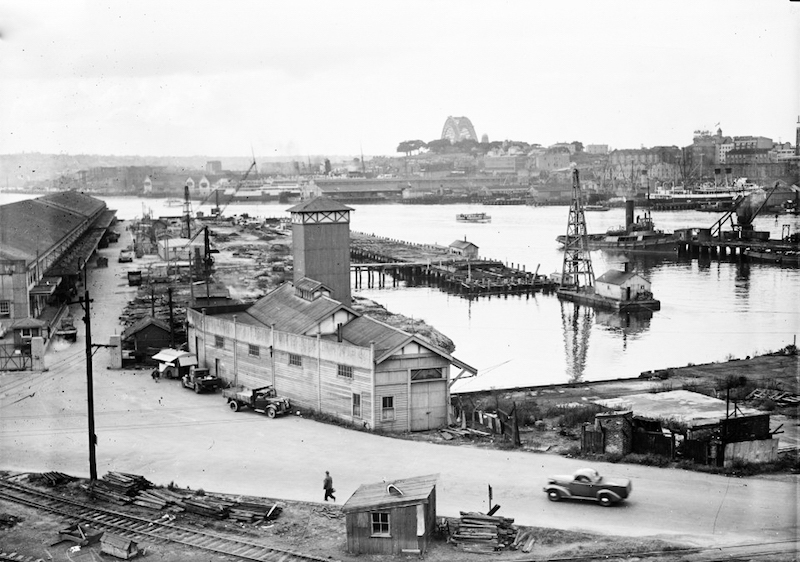Locations > Darling Island
Darling Island
After subdivision in 1839, individuals reclaimed the ‘putrid mudflats’, by dumping cartloads of fill and rubble. Many jetties, slips, docks and wharves were built. Darling Island was then redeveloped as the shipyard of the Australasian Steam Navigation Company.
By the 1880s the ASN yard occupied all Darling Island, inside a retaining wall that encompassed a slip, offices, stores and workshops as well as smaller departments for trades. In 1889 it was ‘a perfect hive of industry, a busy bustling manufacturing centre’. At that moment the government resumed Darling Island and most nearby properties to improve the wharfage.
Industrial wharves were built, and rail connections were made between the wharves and the Darling Harbour Railway linking Pyrmont with Darling Harbour, Rozelle and White Bay.
The Pyrmont Power Station in 1904 and the Royal Edward Victualling Yard created a completely new landscape, divorced from the community that survived in the middle of the peninsula.
For the next half century land was reclaimed and the shoreline transformed for railways, roads and wheat handling. Darling Island became a massive wharf linked to the railway network.
Grain handling was moved to Glebe Island in 1928, allowing a makeover of the wharves to handle general cargo. When war broke out, men and material passed through the wharves in huge numbers, so the wharves began to specialise in passenger facilities in the post-war years. The first purpose-built passenger terminal opened in 1950. From the 1970s, however, as Pyrmont industry declined, the wharves fell into disrepair.
Now there are upmarket apartments and businesses, including Fairfax and Google, and two parks, Ballaarat Park and Metcalfe Park.

Wool lorries at Pyrmont wharves
Frames attached to the wall of the multi level building and a smaller one on the edge of the wharf were used to transfer stores to ships. May 1940























